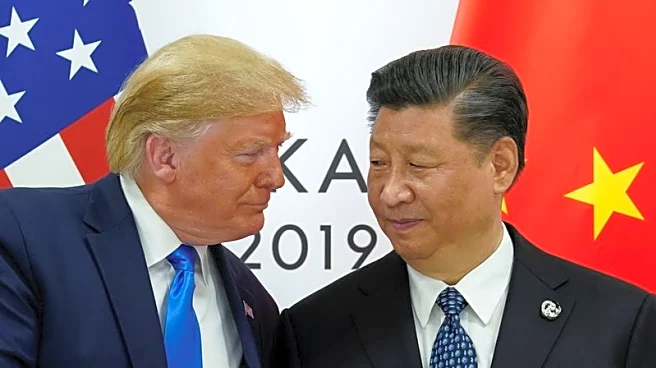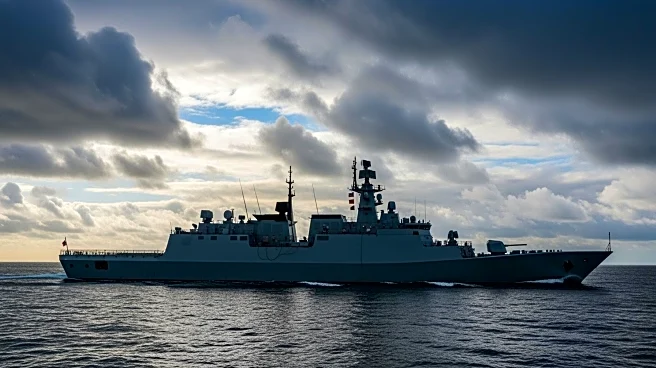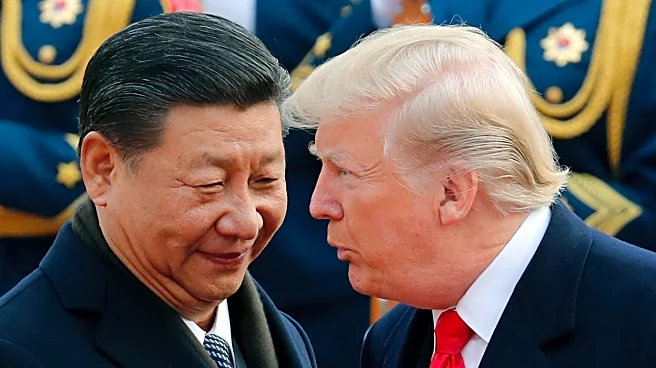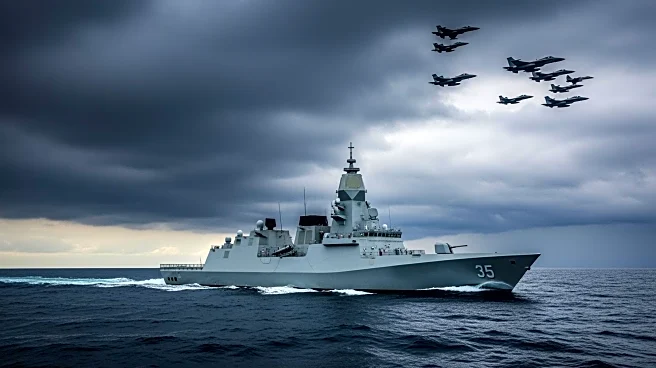What's Happening?
Chinese research vessels have been conducting surveys in Japan's exclusive economic waters, causing alarm for Japan, a U.S. treaty ally. The Japanese government, through then-Foreign Minister Takeshi Iwaya, has demanded that China cease these activities,
which are occurring without Tokyo's consent. The vessels, including the Jia Geng and others, have been spotted in the Philippine Sea and the East China Sea, areas of strategic importance due to overlapping exclusive economic zones (EEZs) between Japan and China. The Japanese coast guard has been tracking these vessels and has issued demands for suspension of their activities, citing concerns over unauthorized scientific research.
Why It's Important?
The presence of Chinese research vessels in Japan's EEZ is significant due to the potential dual-use nature of oceanographic research, which could support military operations. This situation underscores the ongoing tensions in the East China Sea, where both countries have yet to delimit their EEZs. The activities could be gathering intelligence for military purposes, such as studying ocean currents to aid submarine deployments. This development is crucial for U.S. interests as Japan forms part of a defensive line under the U.S. island chain strategy aimed at containing China's military activities in the region.
What's Next?
China's maritime research activities are expected to continue, raising questions about how Japan will respond to safeguard its economic waters. Diplomatic efforts may be intensified, with Japan likely to continue lodging protests through diplomatic channels. The situation may also prompt Japan to enhance its maritime surveillance and defense capabilities to counteract unauthorized activities in its EEZ.
Beyond the Headlines
The ongoing maritime activities highlight broader geopolitical tensions in the region, with implications for international maritime law and the balance of power in the western Pacific. The situation may influence future negotiations between Japan and China regarding EEZ delimitation and resource development, potentially affecting regional stability.















